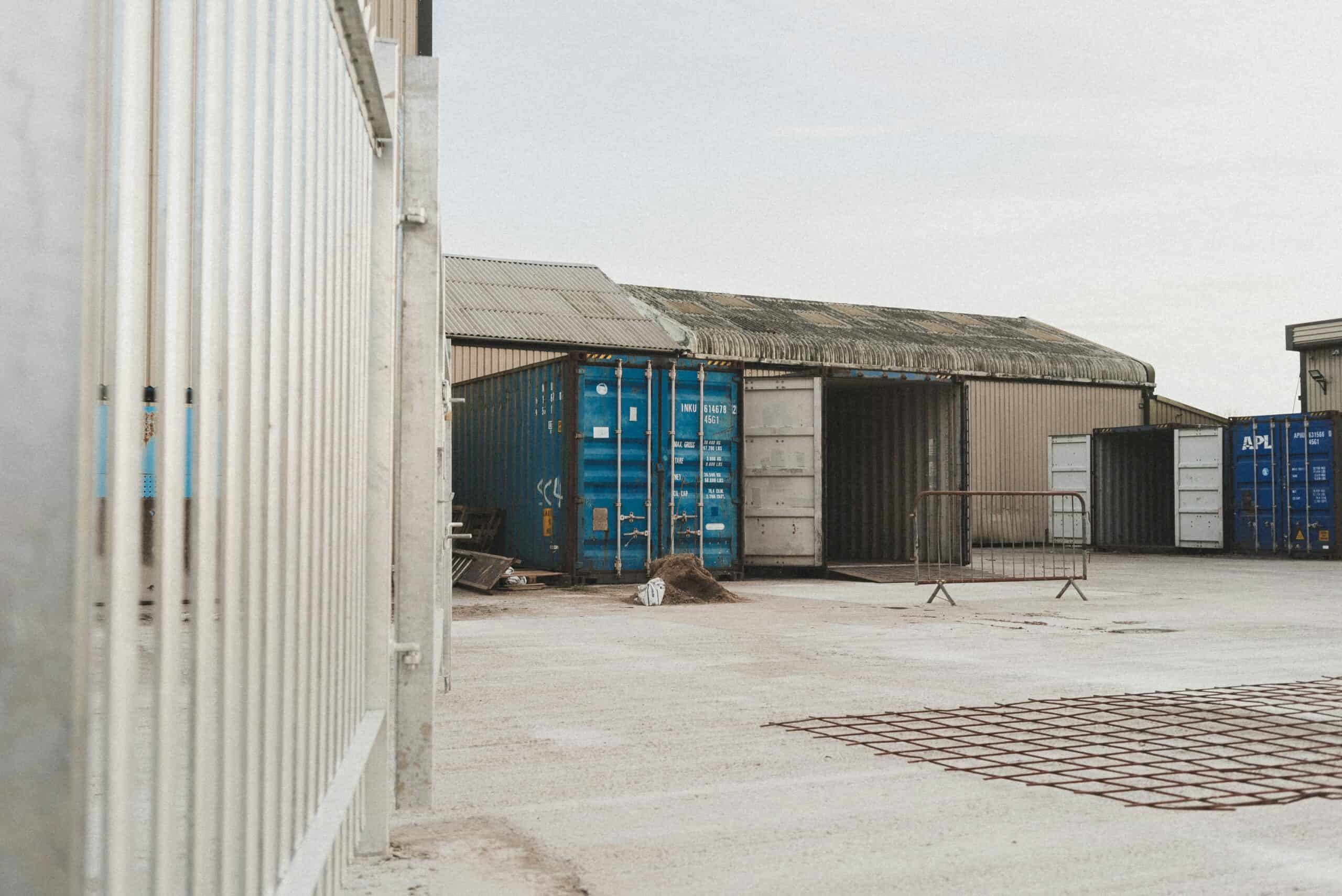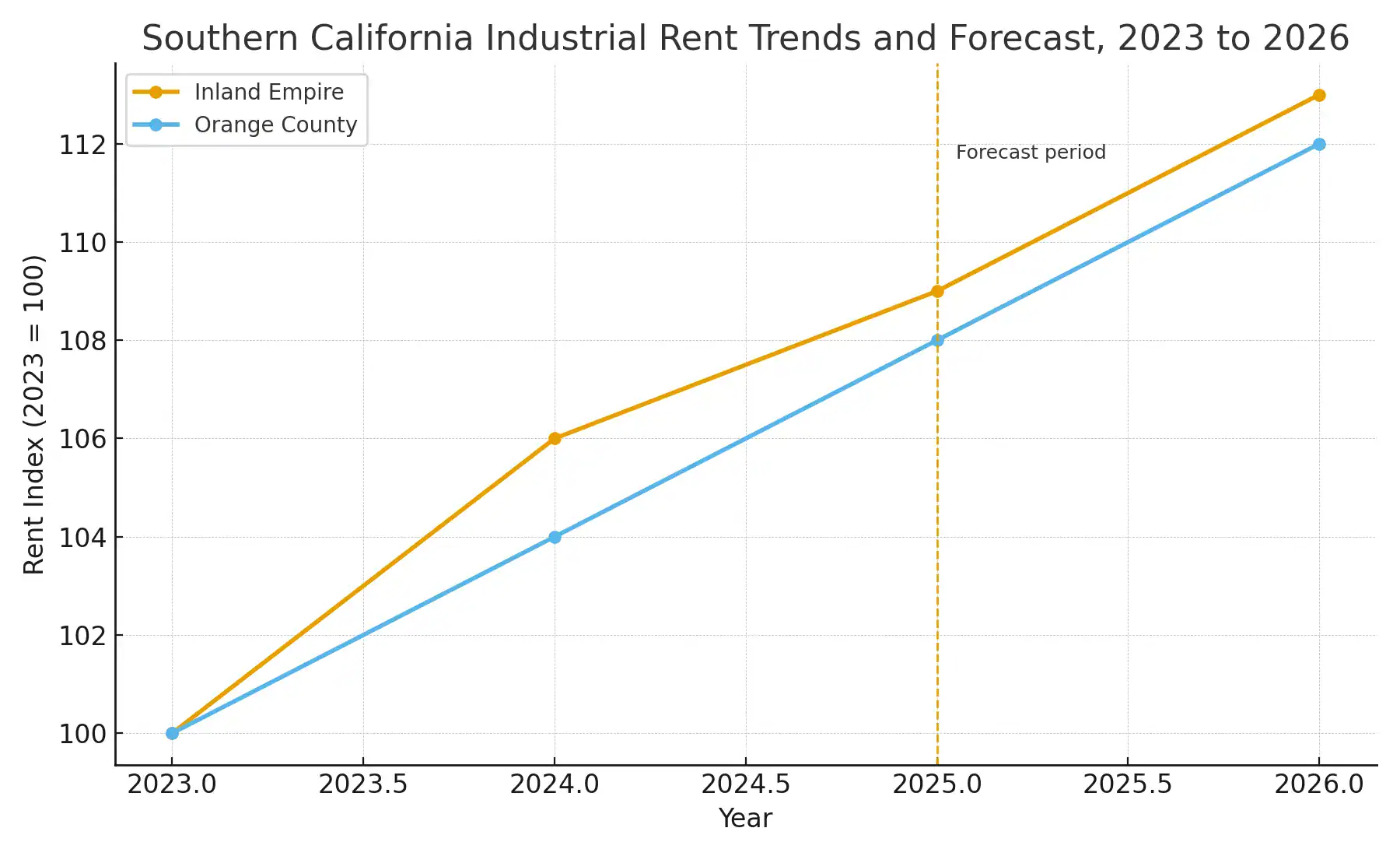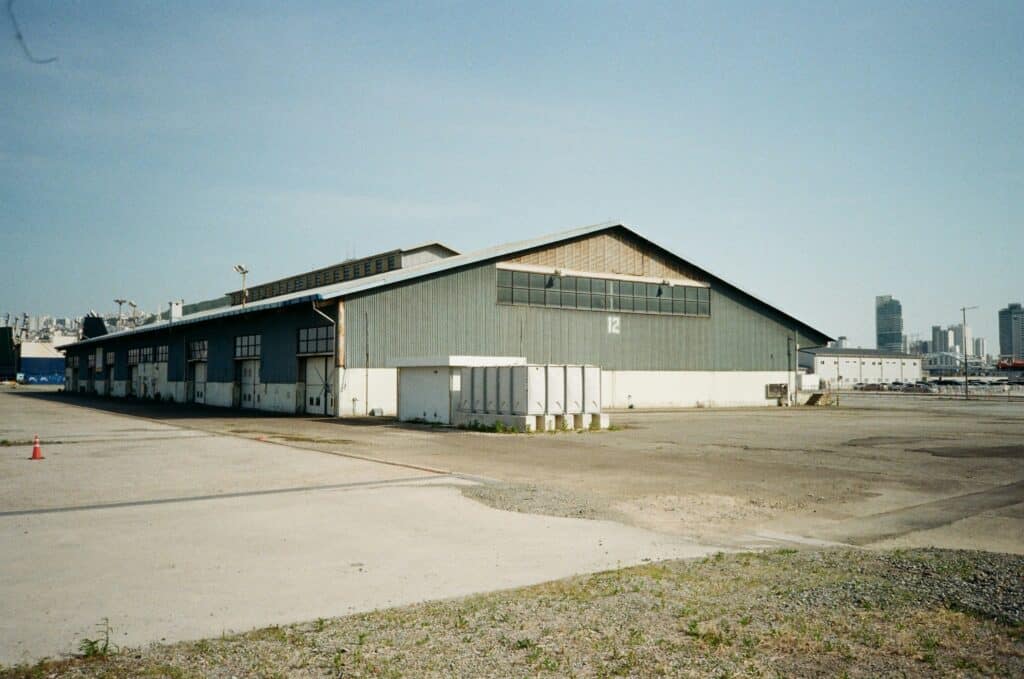Key Takeaway: Southern California’s industrial warehouse market shows diverging trends—the Inland Empire offers affordable logistics space with 4.5% vacancy and warehouse leasing rates of $1.45–$1.60/sq ft, while Orange County commands premium NNN lease rates of $1.75–$2.10/sq ft with sub-3% availability in its supply-constrained market.
Southern California’s industrial real estate market continues to shift as demand, vacancy rates, and commercial property pricing evolve between the Inland Empire and Orange County. Both markets are critical to regional growth, one powered by large-scale logistics and the other by high-value infill opportunities and manufacturing facilities.
This market analysis from KEYZ Commercial Real Estate compares current rent levels, vacancy trends, cap rates, and investment potential across both regions. Whether you’re an industrial property owner, commercial real estate investor, or tenant searching for warehouse space or distribution centers, understanding these trends can help you make informed decisions and position your assets effectively for 2025 and beyond.
Inland Empire: Strong Demand, Rising Rents, and Expanding Industrial Inventory
The Inland Empire remains the industrial heart of Southern California and a major logistics hub. Its proximity to the ports of Los Angeles and Long Beach, combined with major interstate access via I-10, I-15, and I-215, continues to attract logistics operators, e-commerce fulfillment centers, third-party logistics (3PL) providers, and distribution tenants.

Key Market Indicators
Average Industrial Rent (2025): Approximately $1.45–$1.60 per sq. ft. triple net lease (NNN), up nearly 4–6% year-over-year according to CBRE’s 2025 Southern California Industrial Market Report.
Vacancy Rate: Around 4.5%, up slightly from record lows due to new construction delivering Class A industrial space and modern warehouse facilities, per JLL’s Q2 2025 Industrial Outlook.
Development Pipeline: Over 25 million sq. ft. of industrial space currently under construction, the largest volume in the western United States, including flex space and cold storage facilities (CoStar Group, 2025).
Cap Rates: Stabilizing around 5.0–5.5% for institutional-quality assets, offering attractive investment returns for commercial real estate brokers and investors (Marcus & Millichap, Q2 2025).
Property Tax Rates: Generally lower than coastal markets, reducing total occupancy costs for tenants.
While new deliveries have increased availability, much of the prime warehouse space is being pre-leased before completion. Institutional investors, REITs, and commercial real estate brokers remain active in the region, viewing the Inland Empire as a long-term growth market driven by logistics expansion, supply chain optimization, and e-commerce growth.
Submarket Spotlight: Ontario, Riverside, and Perris
Ontario Ranch continues to see significant development activity, particularly for large-format distribution centers and cross-dock facilities exceeding 500,000 sq. ft. with high clear height requirements (32-40 feet) and optimal column spacing for modern warehouse operations.
Riverside offers mid-tier pricing with excellent freeway access, attracting manufacturing and regional distribution users seeking dock-high loading facilities and competitive warehouse leasing rates.
Perris provides the most affordable industrial property options in the region, popular with smaller logistics companies, third-party logistics (3PL) providers, and tenants requiring flexible building size requirements.
However, tenants face challenges from rising rents and limited Class A availability in prime locations, prompting many to consider these secondary submarkets for better value, lower tenant improvement allowance needs, and expansion opportunities.
Explore Inland Empire Industrial Properties →
Orange County: Limited Supply, Premium Pricing, and Landlord Leverage
In contrast, Orange County’s industrial market operates under a very different set of dynamics. With limited land availability, strict zoning regulations, and virtually no large-scale new development, the county has become a landlord-favorable, supply-constrained market.
[IMAGE 3 – Orange County Industrial]
- File name: orange-county-class-a-industrial-property-irvine.jpg
- Alt text: “Modern Class A industrial building in Orange County near Irvine business district with professional landscaping and executive access”
Key Market Indicators
Average Industrial Rent (2025): Roughly $1.75–$2.10 per sq. ft. NNN (net lease), among the highest in Southern California (CBRE Orange County Industrial Report, Q2 2025).
Vacancy Rate: Below 3%, with very few spaces over 50,000 sq. ft. available for lease and minimal sublease space on the market (JLL Orange County Market Analysis, 2025).
New Construction: Less than 1 million sq. ft. currently underway, primarily smaller infill projects, build-to-suit developments, and adaptive reuse of existing manufacturing facilities (CoStar Market Analytics, 2025).
Cap Rates: Premium properties trade at 4.0–4.5%, reflecting investor confidence, scarcity value, and lower risk profiles for commercial real estate investment.
Lease Structure: Most properties operate under triple net leases (NNN) with annual escalations and limited tenant improvement allowances compared to the Inland Empire.
Tenants in Orange County value its proximity to major population centers, executive housing in areas like Newport Beach and Irvine, and coastal access—similar to the clustering advantages seen in Orange County’s office market. However, they often face higher lease rates, limited sublease options, minimal expansion flexibility, and stricter zoning regulations.
Why Orange County Commands Premium Rents
The county’s combination of high demand and fixed supply makes it one of the most resilient commercial real estate markets in California. Property owners and industrial property management firms benefit from:
- Strong rent growth and annual lease escalations
- Minimal tenant turnover and long-term lease stability
- High barriers to entry for new competition
- Premium location value near major business clusters
- Access to skilled workforce and executive talent
Comparative Snapshot: Side-by-Side Market Analysis
What This Means for Tenants: Choosing the Right Industrial Location
For occupiers and tenants, the Inland Empire offers affordability and availability, while Orange County provides prestige and proximity to key business centers and office and industrial space integration.
When to Choose the Inland Empire:
- You need 100,000+ sq. ft. of warehouse space or distribution facilities
- Your business prioritizes cost efficiency and lower operating expenses
- You require easy access to major ports (LA/Long Beach) and interstate highways
- You’re in e-commerce fulfillment, 3PL logistics, or large-scale distribution
- You want room for future expansion with flexible building size requirements
- You need high clear heights (32-40 feet) for modern racking systems
- You require cross-dock capabilities and multiple loading docks
- You prefer lower property tax rates and reduced total occupancy costs
When to Choose Orange County:
- You need executive accessibility and proximity to corporate headquarters
- Your products require shorter last-mile delivery to coastal markets
- You value brand prestige and professional image, particularly near key business clusters like Irvine Spectrum or South Coast Metro
- You’re in high-tech manufacturing, medical devices, aerospace, or specialized production
- Space requirements are under 50,000 sq. ft.
- You need proximity to skilled workforce and engineering talent
- You’re willing to pay premium rates for location advantages
- Your business benefits from being near complementary office space
Tenants should also plan for longer negotiation timelines and limited renewal flexibility in both markets, as landlords remain selective and demand continues to outpace supply. Working with an experienced tenant representation specialist can help secure favorable lease terms, better tenant improvement allowances, and optimal gross lease vs NNN structures.
Schedule a Tenant Consultation →
What This Means for Owners and Investors: Commercial Real Estate Portfolio Strategy
For property owners and real estate investors, both regions present opportunities but with very different risk profiles and return potential.
Inland Empire Investment Advantages:
- Higher yields (5.0–5.5% cap rates) and better cash-on-cash returns
- Stronger rent growth supported by logistics demand and port proximity
- Scale opportunities with large-format assets and institutional-grade properties
- Infrastructure investments improving access, utilities, and transportation corridors
- Institutional investor interest providing exit liquidity and market depth
- Development opportunities with available land and supportive zoning regulations
- Value-add potential through property repositioning and modernization
Orange County Investment Advantages:
- Lower risk with minimal vacancy exposure and tenant stability
- Premium asset pricing and value retention through market cycles
- Long-term stability with credit tenants and extended lease terms
- Limited new supply protecting rent levels and market fundamentals
- Wealth preservation for conservative capital and 1031 exchange strategies
- Infill development potential for high-value, smaller-scale projects
- Tenant quality with established companies and lower default risk
Many sophisticated investors and commercial real estate brokers are diversifying portfolios to include both markets, leveraging the Inland Empire’s growth trajectory and Orange County’s resilience for balanced performance and risk-adjusted returns.
Looking to buy or sell industrial property? Contact our investment sales team for a confidential market analysis, property valuation, and strategic advisory services.
2026 Market Outlook: What to Expect
As e-commerce growth stabilizes and interest rates level out, analysts expect moderate rent increases (3–5% annually) across both markets through 2026.

Inland Empire Forecast:
- Vacancy may rise slightly to 5.0–5.5% as new inventory delivers (JLL Industrial Forecast, 2025)
- Absorption remains strong with 15–20M sq. ft. of annual take-up (CBRE Market Report, 2025)
- Rent growth continues at 3–4% per year for Class A space (Marcus & Millichap, 2025)
- Development activity remains robust in Ontario, Moreno Valley, and Perris (CoStar Group, 2025)
- Increased competition may improve tenant improvement allowances
- Property tax rates remain competitive compared to coastal markets
Orange County Forecast:
- Rents likely to hold steady or edge higher by 2–3% annually (CBRE OC Report, 2025)
- Vacancy constrained near 2.5–3.0% due to zero land availability (JLL Analysis, 2025)
- Minimal new construction except specialized build-to-suit projects and adaptive reuse
- Strong tenant retention with limited relocation options
- Continued landlord leverage in lease negotiations
- Premium pricing sustained by supply constraints and location value
According to CBRE’s 2025 Southern California Industrial Outlook, logistics-driven rent growth in the Inland Empire continues to lead the western United States, while Orange County maintains its position as the region’s most supply-constrained market with the highest warehouse leasing rates.
Industrial Real Estate Trends Shaping Southern California
Several macro trends are influencing both markets and creating opportunities for tenants, owners, and commercial real estate investors:
E-commerce Evolution: While pandemic-era explosive growth has moderated, online retail continues driving demand for modern distribution space with high clear heights, cross-dock capabilities, and automated warehouse systems.
Nearshoring & Reshoring: Companies bringing manufacturing back from overseas are seeking industrial space with manufacturing capabilities, adequate power infrastructure, and proximity to ports and transportation corridors.
Last-Mile Logistics: The push for faster delivery is increasing demand for smaller urban industrial facilities closer to population centers, particularly benefiting Orange County’s infill locations and multi-tenant flex space.
Sustainability Requirements: More tenants are seeking LEED-certified buildings, energy-efficient warehouse facilities, and properties with solar power capabilities to meet corporate ESG goals and reduce operating costs.
Automation & Technology: Modern tenants require higher clear heights (36+ feet), stronger floor loading capacity, and enhanced electrical systems to support robotics, automated storage and retrieval systems (AS/RS), and advanced warehouse management systems.
Cold Storage Demand: Growth in fresh food delivery and pharmaceutical logistics is driving demand for temperature-controlled facilities and cold storage warehouse space in both markets.
Flexible Lease Structures: More tenants are seeking shorter lease terms, flex space options, and hybrid arrangements combining office and industrial space to adapt to changing business needs.
Strategic Takeaways for Southern California’s Industrial Market
Industrial rent growth in Southern California shows no signs of slowing, but the balance between affordability and accessibility remains key for both tenants and investors. The Inland Empire offers room to expand, stronger investment yields, and competitive warehouse leasing rates, while Orange County provides stable, premium locations for established tenants willing to pay for location advantages and brand positioning.
Whether you own, lease, or invest in commercial real estate, understanding how these two markets move together—and how they differ in terms of cap rates, tenant improvement allowances, zoning regulations, and property tax rates—helps you make strategic decisions that align with your business goals and financial objectives.
KEYZ Commercial continues to monitor regional trends, track new construction activity, analyze sublease space availability, and provide clients with expert guidance to achieve optimal results in today’s evolving industrial landscape.
Explore more Southern California market insights from KEYZ Commercial to stay ahead of regional trends, including our analysis of Orange County’s office cluster growth zones.
Frequently Asked Questions (FAQ)
Q1: Why are industrial rents higher in Orange County than in the Inland Empire?
Industrial rents are higher in Orange County because land availability is extremely limited due to strict zoning regulations, and new construction is scarce. The area also offers proximity to executive housing, coastal access, major population centers, and established business clusters, which increase demand for warehouse space and drive up lease rates. The supply-constrained market gives landlords significant pricing power, while tenants pay a premium for location advantages and shorter supply chains.
Q2: Is the Inland Empire still a good market for industrial tenants?
Yes. The Inland Empire remains one of the best options for industrial tenants who need larger spaces and cost efficiency. Although warehouse leasing rates have increased 4–6% year-over-year, the region still offers better availability, more competitive pricing, lower property tax rates, and higher tenant improvement allowances compared to coastal markets. It’s particularly attractive for logistics, e-commerce fulfillment, 3PL operations, and distribution operations requiring modern facilities with high clear heights and cross-dock capabilities.
Q3: How do vacancy rates compare between the Inland Empire and Orange County?
As of 2025, the Inland Empire’s vacancy rate is around 4.5 percent, while Orange County’s is below 3 percent. This gap reflects the Inland Empire’s higher level of new construction, available inventory, and ongoing development pipeline. Orange County’s tight vacancy creates a landlord-favorable market with limited negotiation leverage for tenants and minimal sublease space options. Both markets remain below the national industrial average, indicating strong demand fundamentals.
Q4: What types of companies lease industrial space in these regions?
The Inland Empire is dominated by logistics operators, e-commerce fulfillment centers, third-party logistics (3PL) providers, manufacturing tenants, and distribution companies requiring large-scale warehouse facilities. Orange County attracts high-tech manufacturers, medical device companies, aerospace firms, specialized production facilities, and distribution users who value location and brand presence over cost savings. Many of these companies also maintain office space in Orange County’s key business clusters for their administrative and executive teams, creating integrated office and industrial space strategies.
Q5: What are cap rates for industrial properties in these markets?
Cap rates in the Inland Empire typically range from 5.0–5.5% for institutional-quality assets, offering higher yields for investors seeking growth and stronger cash-on-cash returns. Orange County industrial properties trade at 4.0–4.5% cap rates, reflecting lower risk, scarcity value, premium pricing, and stable tenant demand. The spread between these markets represents the risk-return tradeoff between growth potential (Inland Empire) and stability (Orange County) in commercial real estate investment strategies.
Q6: What is the difference between NNN lease and gross lease structures?
A triple net lease (NNN) requires tenants to pay base rent plus property taxes, insurance, and maintenance costs separately, giving them more control but less predictability in total occupancy costs. A gross lease includes these expenses in the base rent, providing simpler budgeting. Most industrial properties in both the Inland Empire and Orange County operate under NNN lease structures, though some smaller properties in Orange County may offer modified gross leases. Understanding gross lease vs NNN implications is critical when comparing properties and negotiating lease terms.
Q7: How can KEYZ Commercial help owners and tenants in these markets?
KEYZ Commercial provides full-service commercial real estate brokerage support, including tenant representation, landlord advisory, investment sales consulting, industrial property management referrals, and comprehensive market analysis. Our team of experienced commercial real estate brokers helps clients identify opportunities, negotiate favorable lease terms with optimal tenant improvement allowances, structure effective gross lease vs NNN arrangements, navigate zoning regulations, and position properties for maximum return in both the Inland Empire and Orange County markets.
Sources & References
This market analysis is based on data and research from the following authoritative sources:
- CBRE Research: 2025 Southern California Industrial Market Outlook
- JLL (Jones Lang LaSalle): Industrial Market Statistics & Trends
- CoStar Group: Commercial Real Estate Market Insights
- Marcus & Millichap: Industrial Property Investment Research
- City of Irvine: Development & Planning Reports
For the most current market data and custom analysis for your specific property needs, contact KEYZ Commercial.
Work With Southern California’s Industrial Real Estate Experts
KEYZ Commercial is a Southern California-based commercial real estate brokerage specializing in industrial, retail, office and industrial space, and investment properties. With deep local expertise, extensive market knowledge, and a client-first approach, the firm helps property owners, investors, tenants, and commercial real estate brokers navigate complex markets like the Inland Empire and Orange County to achieve their goals with confidence.
Whether you’re searching for warehouse space, looking to invest in industrial real estate, need strategic advice on your commercial property portfolio, require tenant representation services, or want to understand cap rates and investment returns, KEYZ Commercial delivers results-driven solutions tailored to your specific needs.
Our services include:
- Tenant Representation: Helping businesses find and negotiate optimal warehouse leasing rates and lease terms
- Landlord Services: Marketing properties, tenant screening, and lease negotiation
- Investment Sales: Buy-side and sell-side representation for commercial real estate investors
- Market Analysis: Comprehensive research on cap rates, rent trends, and market fundamentals
- Portfolio Strategy: Advisory services for property owners and institutional investors
📞 Contact KEYZ Commercial: hello@keyz.com | 888.539.9101 (KEYZ 101)
🌐 Visit: www.keyzcre.com
Schedule Your Free Consultation Today →
Related Resources:
- Orange County Office Cluster Growth Zones Analysis
- Browse Available Industrial Properties
- Learn About Our Services
- Read More Market Insights
Article Published: October 27, 2025
Last Updated: October 27, 2025
Author: KEYZ Commercial Real Estate Team

